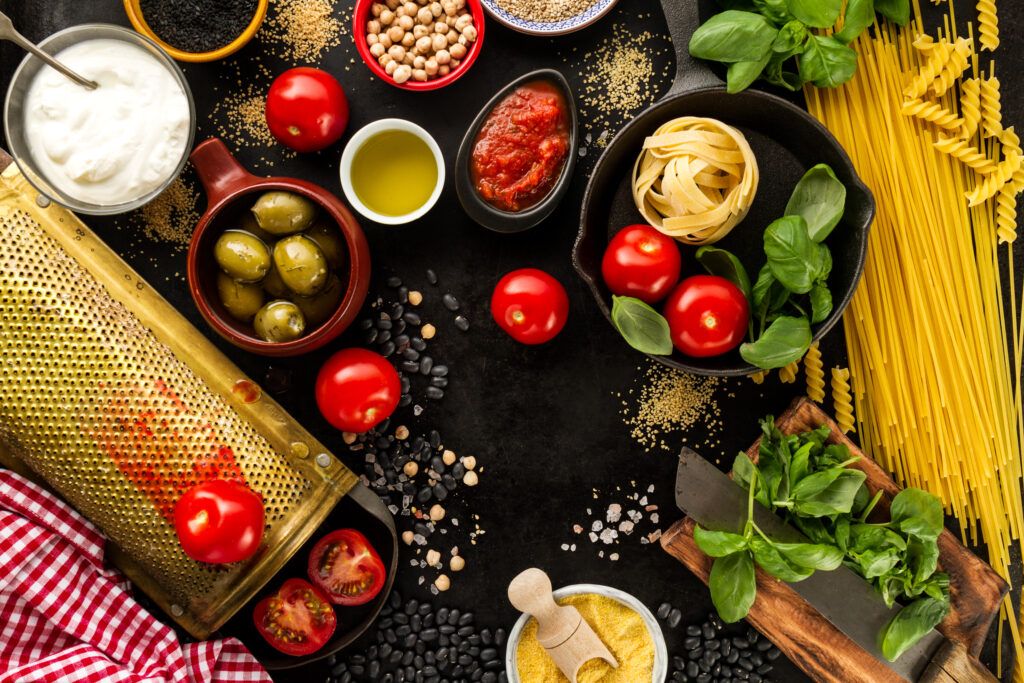You don’t have to be Italian to enjoy Italian food right? If you can’t afford a trip to Italy to indulge in the authentic cuisine in person, we have got you covered. There are many ways you can experience Italian culture and incorporate it into your cooking and lifestyle.

There are over a thousand Italian restaurants or eateries in the state of New York alone, so there is no shortage of places to eat authentic Italian food. For those who like to cook their own Italian dishes there are websites, recipe books and blogs dedicated solely to Italian cuisine. So what is it about Italian food culture that fascinates us?
The Flavors
Italian cooking uses fresh ingredients, olive oil and herbs, a combination that is guaranteed to bring out the best in any dish. Think of dishes like spaghetti carbonara and bolognese, uncomplicated dishes with a few ingredients but so full of flavor. Ever notice the difference between regular pizza and authentic Italian pizza? It’s because of the freshness of the ingredients and the quality in preparation. Click here for more information about Italian cuisine and fresh ingredients like olive oil and cheese.
Popular foods like pizza and pasta are automatically associated with Italian cuisine. However, in Italy, the cuisine is determined by region. Central Italy favors meat dishes like the tuscan tripe and lampredotto and some areas of Umbria have cooked boar on their menus. The south is famous for its fruits and olive oil, the southern region is the perfect place for a pizza Margherita followed by a limoncello. Sicily has delectable seafood dishes like sweet and sour tuna.
If ever there was a culinary bucket list then we recommend these and the following dishes on it.
Baccala
Baccala is salted and dried cod, the fish is then soaked and the salt rinsed off before cooking. Depending on the region you are from there are different ways to prepare baccala. In Venice, the fish is poached and whipped with olive oil. When visiting the romantic city, expect to see a lot of baccala, since it’s a very popular street food. In Tuscany the fish is cooked with tomatoes, basil and garlic. A popular Sicilian baccala recipe pairs the fish with tomatoes, capers and potatoes.
Vitello Tonnato
The literal translation for vitello tonnato is ‘tunnied veal’, originating in Piedmont. This is a simple dish of cooked veal thinly sliced then served with tuna sauce and a bit of lemon or capers. Some places serve it as an antipasto in between courses, while others serve it as an appetizer.
Ricotta Gnudi
Not only is ricotta gnudi delectable it’s also easy to make, this dish is similar to gnocchi. Where gnocchi is made from potatoes, gnudi is made from ricotta which makes it light and tender. The translation of gnudi means naked, because they are not covered by pasta, such as ravioli. Gnudi can also be made with spinach and enjoyed with tomato sauce or spring vegetables.
History and Traditions
Who doesn’t love a good backstory. Whether it’s about how your favorite celebrity couple met or why we fear breaking mirrors. Stories give us a different perspective to things we already know. It’s no different when it comes to the history and traditions behind authentic Italian cuisine. As we will now discover:
● Tomatoes are not Indigenous to Italy
Even though they are the base ingredient for many Italian dishes, tomatoes are not indigenous to Italy. They were brought over by the Spanish from the Americas in the 1500’s. They were considered a fruit for the rich and weren’t all that popular because they were a cold food.
● Olive Oil
Spain is actually the biggest olive oil producer followed by Italy and Greece. The best Italian regions for olives are Sicily and Tuscany. Since olives are a fruit, olive oil is technically a fruit juice. The use of olive oil in Italy dates back to ancient times when its importance went beyond the kitchen. Nowadays we use it to enhance other ingredients and give depth to a dish.
● Why Cheese
Cheese plays an important role in Italian cuisine and the country has some of the best cheese varieties in the world. Cheesemaking in Italy started as a way to preserve the precious resource that was milk. The monks added salt from the Salsomaggiore salt mines to create a dry cheese paste. This paste was then set in large wheels and stored. Later on people realized that making cheese was not just a preservation method but also a way to explore different flavors.
Lastly
So, back to the question, what is it about Italian food culture that fascinates us? Food in Italian culture is about more than sustenance, it’s about family, celebration and community. Meal times are an expression of love, a time to share and bond with family and friends.


